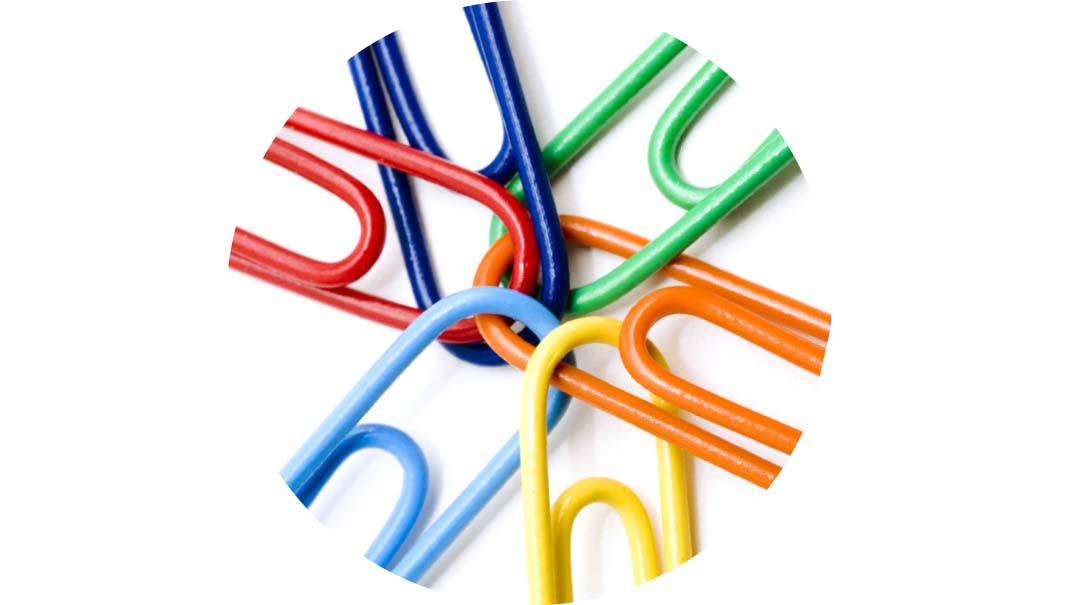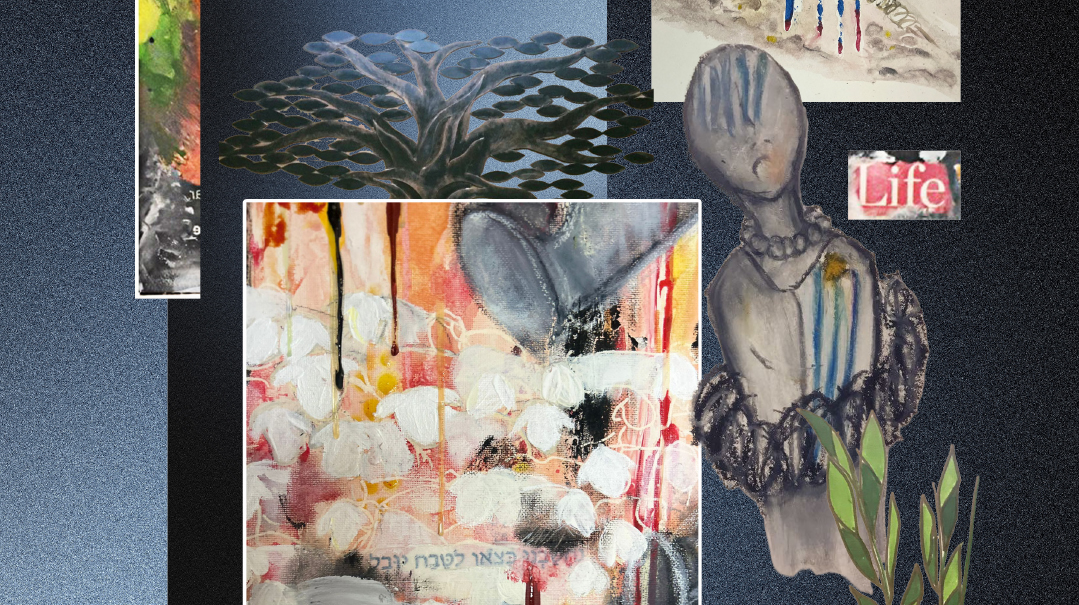On Your Mark with Aliza Bulow

Aliza Bulow reimagines the traditional kiruv model by working from the inside out

I have lots of interesting stories, but the real starting point is when I came to Torah on my own, as a teenager. While some approach Torah reluctantly, prompted by a sense of guilt and transgenerational baggage (your grandparents died in Auschwitz, how could you remain indifferent…), I was attracted by its deep meaning and sense of purpose.
The best way for me to channel my passion for Torah was through kiruv, which I practiced for over 30 years. First, I taught one-on-one, then hosted small events. At some point I began doing kiruv professionally, working for Partners in Torah and then becoming the Senior Educator for Denver’s Jewish Experience.
Every year, I traveled to AJOP (Association for Jewish Outreach Programs) conventions, which was critical to my personal growth as well. You know those camp friends with whom you just pick up wherever you left off? That’s what I felt like, walking into the convention center and seeing the women I remembered from the year before. And then there were the mentors — Rebbetzin Feige Twerski, Miriam Lowenbraun a”h, and others — who were like the camp counselors and who consistently inspired me.
It was a series of informal conversations at AJOP that led me to the next stop on my journey. I learned about the dozens of kiruv couples stationed throughout North America by Ner Le’Elef, the premier kiruv training program. Chaya Levine, Director of the Women’s Division, offered the wives much-needed support, guidance, and community in their far-flung outposts. As the program grew, she needed help.
Eventually she hired me as the director for Ner Le’Elef’s North American women’s program, responsible for the personal and professional development of the dozens of couples spread out throughout the US, Canada, and Mexico.
Initially, I traveled four to six times a year, but as my kids got older, I traveled more frequently. Now that I’m an empty nester, I might visit a community once or even twice a month, sometimes for a few days or over Yom Tov.
I did kiruv all day, but another question gnawed at me: What are we bringing people closer to? A Torah community should be an example that’s so warm and inspiring that people want to be part of it. It should be a place where people feel so safe and true, they would never want to leave, even if they have doubts. Can we create a reality where the light of Torah shines through, and kiruv isn’t necessary?
An Observer’s View
I learned so much from the different towns and rebbetzins I visited. I saw the communities they were building, but I also discovered their communities of origin through their eyes — their parents and siblings, the cities they came from. It showed me the FFB community in a new light.
And what I heard from them was a single, repeated message: “What we’re desperate to give away for free, our sisters in Lakewood and Brooklyn are starving for.” In the kiruv setting, these dedicated ladies were emphasizing the joy, the warmth, the beauty of a Torah life, but too many of their family and friends back home were going through their days by rote, struggling to keep all the balls in the air.
There’s so little time for inspiration and thoughtful conversation. Strong, thoughtful women, who might once have stayed in the chinuch field or volunteered for chesed organizations, are getting master’s degrees, selling their time for money outside of our community. Even rebbetzins, who have formal, often paid positions in the community, can’t make it on their salaries and need side jobs.
Mothers today need more attention and support and are getting less. There’s more work to be done, more demands on our time, and the social fabric of our lives is fraying. Women report having less and less time to nurture the friendships that have the power to sustain and fulfill them. Divorce is rising at an alarming rate, and I think one of the reasons is because without strong social networks and outlets, women under pressure expect their husbands to be able to fill all their emotional needs, and that stresses a marriage.
Turning the Tide
When I first got married, I was taught that the Jewish woman walks around her husband to symbolize that she will be the chomah, the wall that keeps influences out. Today, though, no wall is high enough or thick enough to repel the outside world. In an era when every wall has become permeable, our communal lives need to be rich enough that people want to stay inside.
That’s why I launched Core three years ago, with the goal of strengthening the mothers, who are the core of the Jewish people. The program has three different branches.
One key goal is the professional development of women who are already in leadership roles. We have virtual communities for kallah teachers, rebbetzins, Chevra Kaddisha members, and dating coaches, among others, where they can network, learn, and support one another.
Members can attend training and continuing education classes, and mine each other’s accumulated wisdom. A kallah teacher may ask, “Do you bring up the halachic pre-nup? What do you say?” One woman asked our network if anyone had a great book about hair covering. When no one did, another member decided she would write one.
Our dynamic and engaged group of over 350 kallah teachers is probably the broadest spectrum of Orthodox women coming together anywhere. We’re becoming the go-to when people need resources relating to frum women.
Recently, a community leader reached out for help — did we have anyone who could advise a couple in which the wife had turned her back on her husband’s chassidus? Yep, we have an expert on that. Another woman described a community that was struggling to get the new kollel wives to gel as a group, since they’d all moved in not long before Covid hit. Yes, one community dynamics expert coming right up!
In a more structured setting, we also train women to provide mentorship. After two years of study, our training program is about to graduate its first cohort of almost 40 women. They learned community awareness, how to spot the need for professional intervention, shemiras halashon, and many more topics, all under the guidance and supervision of rabbanim and mental health professionals.
Among the participants are chassidish women from Boro Park, Syrians from Mexico City, Canadians, Australians, and more, among them rebbetzins, lay leaders, and therapists.
At the Core
Finally, acknowledging the truth that strong social relationships are the glue that keep kids, parents, and spouses from leaving the fold, or from staying but merely going through the motions robotically, we facilitate Core Circles. These are micro-communities of five to fifteen women who meet on a regular basis with the sole agenda of strengthening the social fabric.
As closed circles, they promote the level of safe vulnerability that allows meaningful conversation to flow and true connections to form between each other, and with Torah. To date, over 50 circles are active worldwide.
Our trained facilitators can help groups come up with activities or conversation prompts, and also help with navigating group dynamics ( “We’re loving the group, but a neighbor wants to join, and we think the atmosphere will suffer. What do we do?”). Our activities are tailored to the specific group’s social and religious needs, so we might suggest a hike with a one-minute meditation to one group, while another group might sing Hallel together on Rosh Chodesh. One group decided to write ethical wills and discuss their thoughts afterward.
Sometimes, people don’t realize how valuable these friendships are until it’s too late. One woman generously offered her home to host a Core circle, even though she personally didn’t feel the need for it. When her son tragically perished in Meron, she had a tight network of support who stepped in to set up the shivah home and be there for her in ways she never expected she’d need.
The Lone Leader
I always think about Moshe Rabbeinu on the mountain, lifting his arms to give Bnei Yisrael strength to fend off Amalek’s attack. When he couldn’t keep his arms raised, Aharon and Chur came to support him. My take on that episode is that even the very greatest of leaders can’t do it entirely alone, even when he has such a clear vision of his purpose.
We may be far from Moshe Rabbeinu, but as mothers, we’re the linchpins of our family. We don’t have to be alone when there are compassionate and like-minded peers all around us. By being there for our friends and leaning on each other, we can create communities whose light and warmth will prove irresistible.
Secret Weakness:
Procrastibaking! I bake when I get overwhelmed. Muffins, mandelbrot, cinnamon rolls; baking grounds me and I love sharing. You can tell when I’m avoiding a task when the house smells like a bakery.
What I’m Reading:
The biography of Rav Noah Weinberg. Also, The Art of Gathering by Priya Parker, which talks about how to ensure that any gathering, whether social or professional, is meaningful and invigorating. There are sections about handling hard conversations sensitively, rules to ensure guests’ comfort, and how to end a party, among others.
What I Do to Relax:
I don’t enjoy relaxing. What drives me is doing things with purpose. One thing I enjoy occasionally squeezing in is sewing (I actually attended FIT, Fashion Institute of Technology in the 80s); the problem-solving aspect is what appeals to me most. How can I use not-quite-enough fabric to make something for my granddaughter? Is there a way to make this department-store gown tzniyus? Can I incorporate something my grandmother made into something I can use today?
(Originally featured in Family First, Issue 758)
Oops! We could not locate your form.







